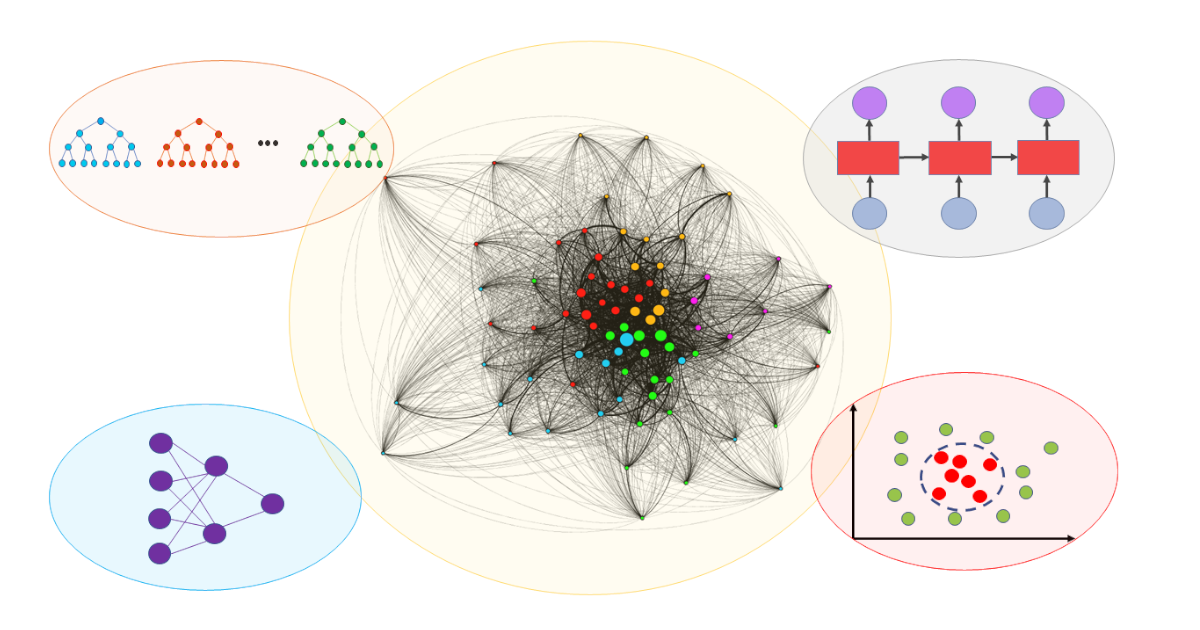- 2.5Impact Factor
- 5.5CiteScore
- 20 daysTime to First Decision
Machine Learning Techniques for the Exploration and Understanding of Complex Systems II
This special issue belongs to the section “Computing and Artificial Intelligence“.
Special Issue Information
Dear Colleagues,
This Special Issue is devoted to the application of machine learning techniques for the study of complex systems, which are composed of several units that interact with each other through relationships that are difficult to detect and interpret using conventional statistical approaches. In particular, complex systems are characterized by the emergence of collective behaviors of constituents that cannot be inferred from their individual properties. Nowadays, the investigation of complexity patterns represents a primary need to unveil the mechanisms behind the evolution of complex systems related to different domains, such as biology, medicine, economics, and social science. Moreover, complex systems science can help to bridge the gap between science, humanities, engineering, and policy, providing a robust approach to address crucial challenges such as the sustainaibility, climate change, health, and social equity.
Machine learning methods provide effective strategies to deal with complex systems, thanks to their ability to extract relevant information from large and heterogeneous datasets. In this Special Issue, we aim to collect research works concerning the usage of machine learning methods to find paths and highlight relationships between the constituent parts of complex systems. We particularly welcome articles in biological, clinical, physical, and social fields, in which it is emphasized how machine learning techniques are able to solve problems more efficiently than traditional statistical methods.
This Special Issue is the second volume; the first volume is available at https://www.mdpi.com/journal/applsci/special_issues/Machine_Learning_Techniques_for_the_Study_of_Complex_Systems)
Dr. Alfonso Monaco
Dr. Loredana Bellantuono
Guest Editors
Manuscript Submission Information
Manuscripts should be submitted online at www.mdpi.com by registering and logging in to this website. Once you are registered, click here to go to the submission form. Manuscripts can be submitted until the deadline. All submissions that pass pre-check are peer-reviewed. Accepted papers will be published continuously in the journal (as soon as accepted) and will be listed together on the special issue website. Research articles, review articles as well as short communications are invited. For planned papers, a title and short abstract (about 250 words) can be sent to the Editorial Office for assessment.
Submitted manuscripts should not have been published previously, nor be under consideration for publication elsewhere (except conference proceedings papers). All manuscripts are thoroughly refereed through a single-blind peer-review process. A guide for authors and other relevant information for submission of manuscripts is available on the Instructions for Authors page. Applied Sciences is an international peer-reviewed open access semimonthly journal published by MDPI.
Please visit the Instructions for Authors page before submitting a manuscript. The Article Processing Charge (APC) for publication in this open access journal is 2400 CHF (Swiss Francs). Submitted papers should be well formatted and use good English. Authors may use MDPI's English editing service prior to publication or during author revisions.
Keywords
- machine learning
- deep learning
- complex networks
- complex systems
- data mining
- data science
- natural language processing
- neurodegeneratve diseases
- imaging
- genomics
- social physics

Benefits of Publishing in a Special Issue
- Ease of navigation: Grouping papers by topic helps scholars navigate broad scope journals more efficiently.
- Greater discoverability: Special Issues support the reach and impact of scientific research. Articles in Special Issues are more discoverable and cited more frequently.
- Expansion of research network: Special Issues facilitate connections among authors, fostering scientific collaborations.
- External promotion: Articles in Special Issues are often promoted through the journal's social media, increasing their visibility.
- e-Book format: Special Issues with more than 10 articles can be published as dedicated e-books, ensuring wide and rapid dissemination.

